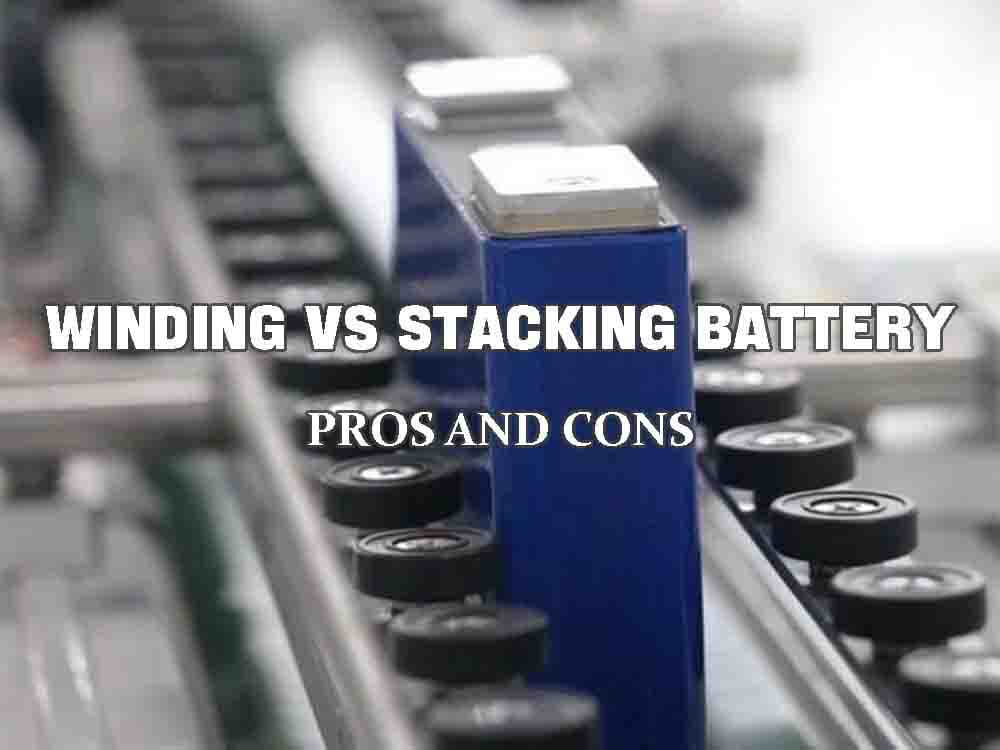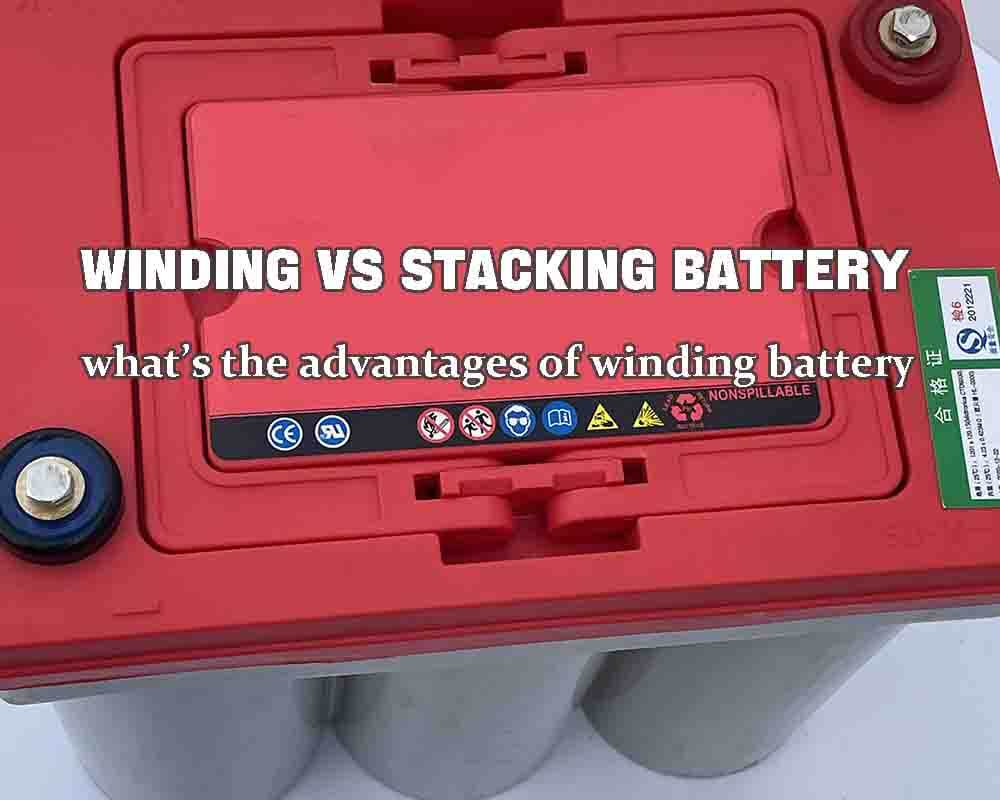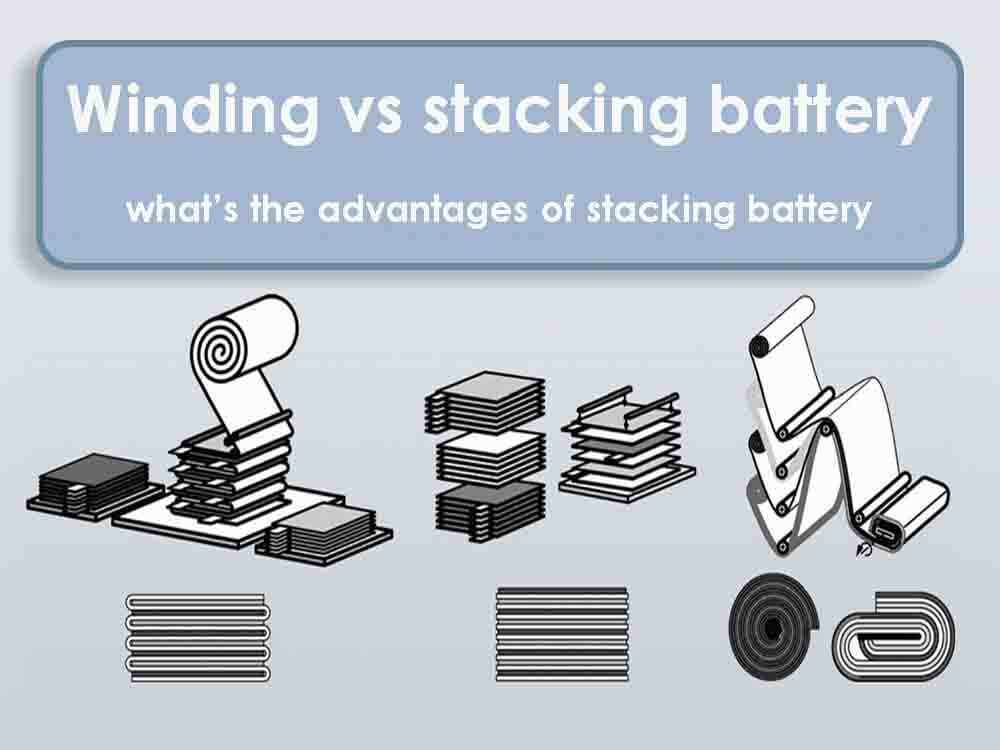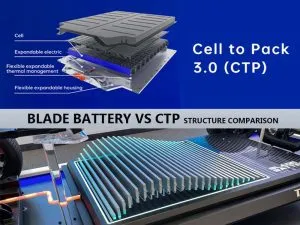Winding vs stacking battery-pros and cons

At present, the future product planning of global leading battery companies like power battery companies in the world is gradually switching to stacking batteries. This article will mainly introduce winding vs stacking battery for the advantages and disadvantages.
What are winding and stacking battery
The winding structure is to roll the cathode sheet, separator, anode sheet and separator of the battery together like chewing gum through the winding of a fixed winding needle, and extrude them into a cylindrical or elliptical cylindrical or square shape.
The wound electric core can form a hard shell cylindrical winding and a square winding. Cylindrical wound batteries represent Tesla’s cylindrical cells, 18650, 21700 and 4680 cells; The square winding electric core is the other electric core commonly used by most automobile companies.
The stacking structure is to cut the anode and cathode pole pieces into the required size, then stack the cathode pole pieces, separator and anode pole pieces into small cell monomer, and then stack the small cell monomer in parallel to form a battery module.
Winding vs stacking battery
Advantages of winding battery
Compared winding vs stacking battery, the advantages of winding process mainly lie in low processing cost, high efficiency and high quality.
● Easy spot welding. Each lithium battery only needs to spot weld two places, which is easy to control.
● Simple production control. One lithium battery has two pole pieces for easy control. Cylinder winding has existed in the market for a long time, with mature technology and good consistency.
● Convenient slitting. Each cell only needs one slitting for the cathode and anode poles, which is less difficult and has high yield.
Disadvantages of winding battery
Compared winding vs stacking battery, the difficulty of winding the cell is the burr of two trimming edges, the alignment of two sides and the control of winding tension.
● High internal resistance and large polarization
Compared winding vs stacking battery, part of the voltage is consumed by the internal polarization of the battery, and the cathode and anode electrodes have only a single lug, so the charge discharge ratio performance is poor.
● Poor heat dissipation effect
Previously, the cylinder winding single electric core was small, and the heat dissipation needed spacing. Compared winding vs stacking battery, the module weight per unit volume was large and square, which was convenient for heat dissipation, but the size was fixed, and the cost of re developing customized mold was high.
The thermal isolation measures between the electric cores are not easy to operate, and improper treatment is likely to cause local overheating, which will lead to uncontrolled heat spread; The internal resistance of full pole ear winding battery is small, which solves the problem of high energy density cell heating, but the new technology still has process difficulties.
● The battery thickness is difficult to control
Because the internal structure of the electric core is uneven, the thickness of the pole ear, the end of the separator, and both sides of the electric core is easy to be uneven.
Advantages of stacking battery
Compared winding vs stacking battery, the advantages of stacking process mainly lie in the advantages of large electric core.
● Higher capacity density. Compared winding vs stacking battery, the electrode plate expands, and the charge and discharge power of the stacking is better.
● High energy density. Compared winding vs stacking battery, the utility rate of the stacking is higher, the area of the loaded electrode plate is larger, and the energy density is higher.
● Flexible size. It can be thickened according to the size of lithium battery like 18650 batteries, and can also be used as a heterosexual battery.
Disadvantages of stacking battery
When comparing winding vs stacking battery, the disadvantage of stacking process mainly lies in the high risk of internal short circuit.
● It is easy to solder
Compared winding vs stacking battery, unlike the winding process, which only requires two trimming edges, the winding process is easy to control burrs and alignment. The stacking structure needs four trimming edges, which is difficult to control and has low qualification rate.
● High equipment cost
High precision semi-automatic or fully automatic equipment is required to control trimming, so the equipment cost and output cost are high. At present, the efficiency of China’s laminating machines is mostly at the rate of 0.8s/chip, which is far behind that of other countries’ laminating machines of 0.17s/chip.
Compared winding vs stacking battery, even if high precision machines are used for laminating and winding, high-speed winding is easier to achieve at low cost than high-speed stacking.
Summary
Through comparison of winding vs stacking battery, the stacking process has higher technical requirements and more initial cost investment. Compared winding vs stacking battery, stacking cell is commonly used in soft package cell and BYD blade battery structure.
The soft core is wrapped with aluminum plastic film, which is flexible in size, high in energy density, but poor in mechanical strength, difficult in sealing process, and difficult to make the PACK energy density high.
BYD’s CTP uses the module free scheme, in which the battery cell acts as the module, the protective shell of the module is removed, and the blade battery itself acts as the beam of the battery. More battery cells are loaded per unit volume, greatly improving space utilization and system energy density.
Winding vs stacking battery-will complement and compete in the future
For power battery, large capacity and low cost of battery cells are the trend of the times. When comparing winding vs stacking battery, the stacking process can give better play to the advantages of large electric cores, which is superior to winding in terms of safety, energy density and process control.
In the future, the energy storage batteries will be mainly square stacking batteries. Compared winding vs stacking battery, the stacking battery has potential to develop and the development momentum of energy storage stacking battery represented by blade battery has begun to show signs in the past two years.
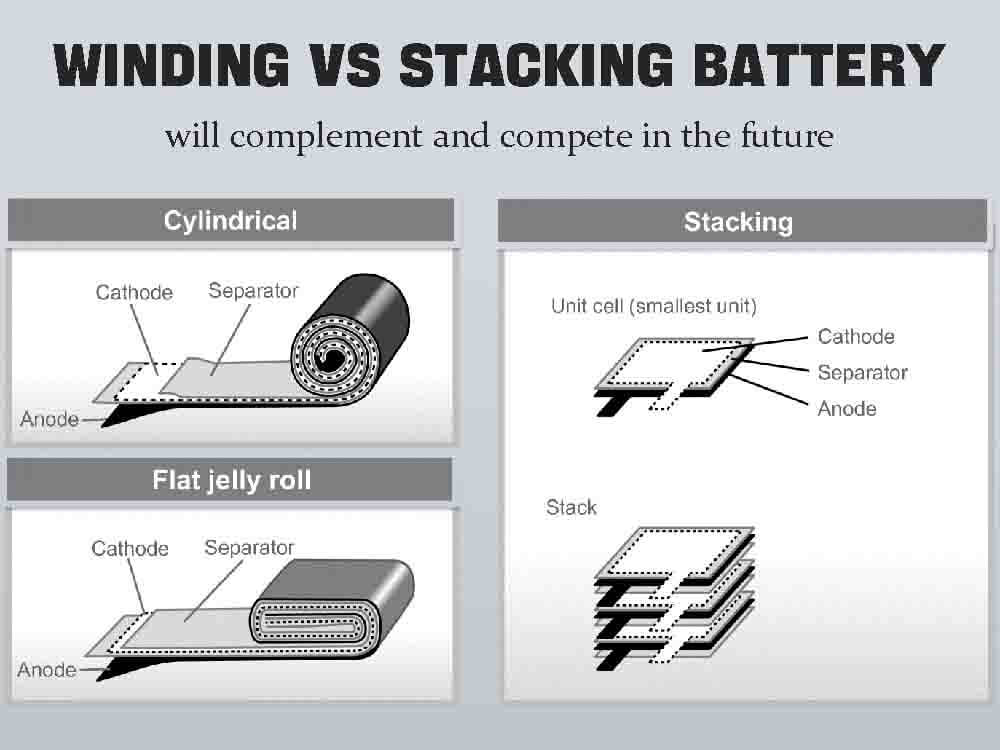
In theory, compared winding vs stacking battery, the stacking battery has the advantages of higher upper limit of volume energy density, more stable internal structure and longer cycle life. It has a higher matching degree with the production process of large capacity batteries.
However, it has shortcomings such as high equipment investment cost, low yield, insufficient efficiency, and great process difficulty. Large capacity and low cost of the electric core are the general trend, and it is difficult to balance the compaction density and energy density.
If the pursuit of endurance requires higher energy density, that is, the coating thickness and compaction density need to be increased, so that more electricity can be obtained at the same volume.
Rolling is the most commonly used compaction process for lithium battery electrode sheets. The electrode plates coated with granular coating on both sides are sent into the gap between the two rolls, and the coating is compacted under the linear load of the roll.
In industrial production, the lithium battery pole piece is generally rolled continuously by the roller machine. The purpose of rolling is to increase the compaction density of the positive material, increase the discharge capacity of the battery, reduce the internal resistance, reduce the polarization loss, extend the cycle life of the battery, and improve the utilization rate of lithium ion battery.
However, if you want to charge and discharge quickly and improve the battery power, you should not press too hard, and the compaction density should be low to provide a faster mobile channel for lithium ions.
In pursuit of high safety, the thicker the isolation film of the electric core, the better, to prevent internal short circuit of the electric core and improve safety. However, the thicker the isolating film is, the lower the energy density and power will be.
With the maturity of stacking process and the improvement of machine and equipment efficiency, the problems of low efficiency and high cost of stacking battery technology may be solved. The result of winding vs stacking battery is that they will form a competitive pattern of complementary competition.

